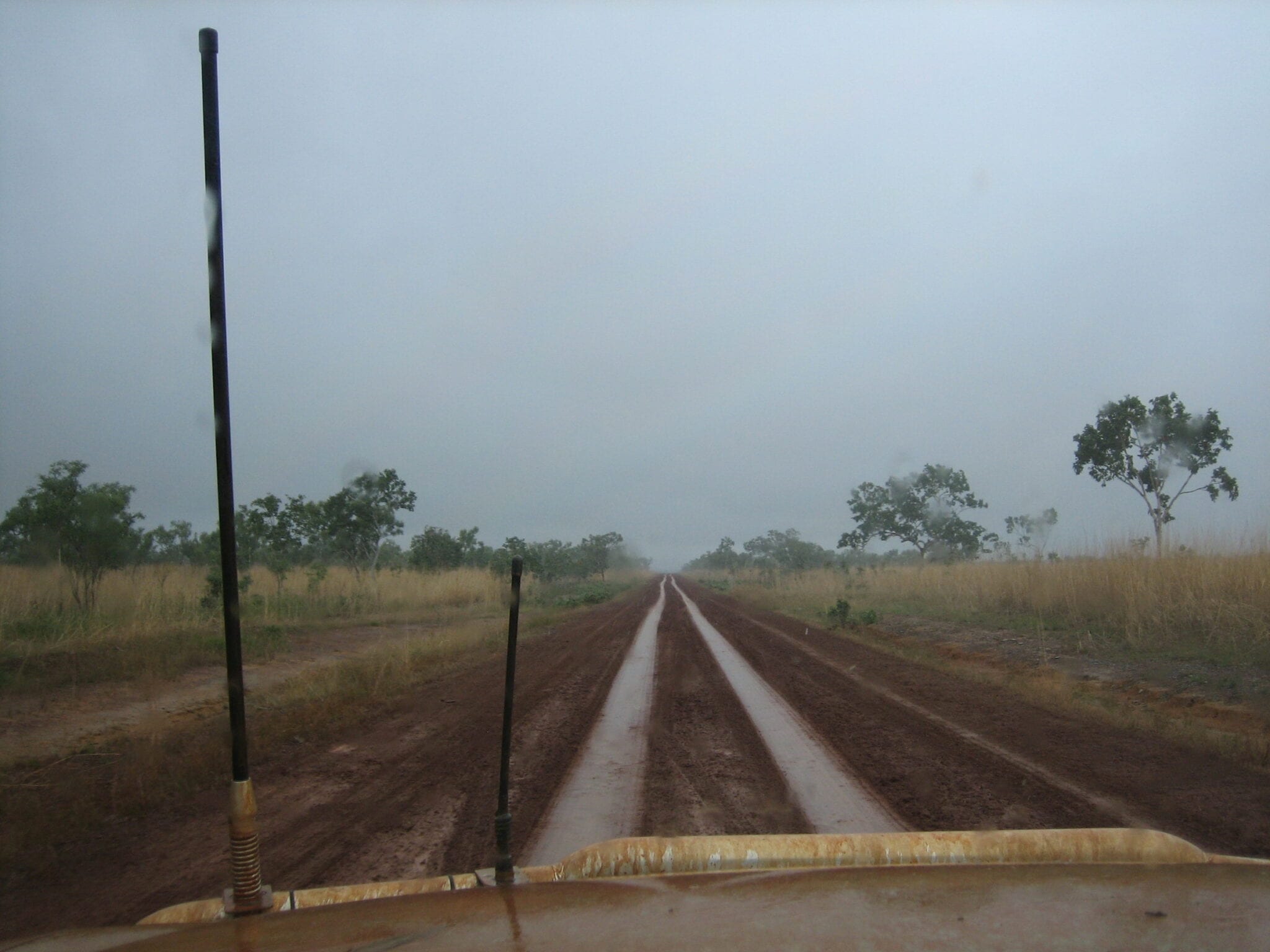Note: This article contains an affiliate link to Snowys. If you click through and make a purchase, we earn a small commission at no extra cost to you.
Nobody plans to get themselves into a life-threatening situation, yet somehow a few of us end up in exactly that position. What are the 2 essential survival supplies you need?
Water and food. Simple, hey!
The thing is, how much? How much water and food do you need to be self-sufficient?
Yes, we’re talking about remote travel here. But this applies equally to preparing for self-sufficiency during floods, cyclones or any situation where you can’t get supplies for a while.
A Simple Plan
Now, what exactly do we mean by survival supplies? Well, it’s those supplies of water and food to keep you alive and healthy if an emergency strikes.
You might be travelling through a place out of season, you’re the only person within a couple of hundred kilometres and you become hopelessly bogged in sand. Or you might be stuck somewhere due to an unseasonal downpour, cut off by flooding.
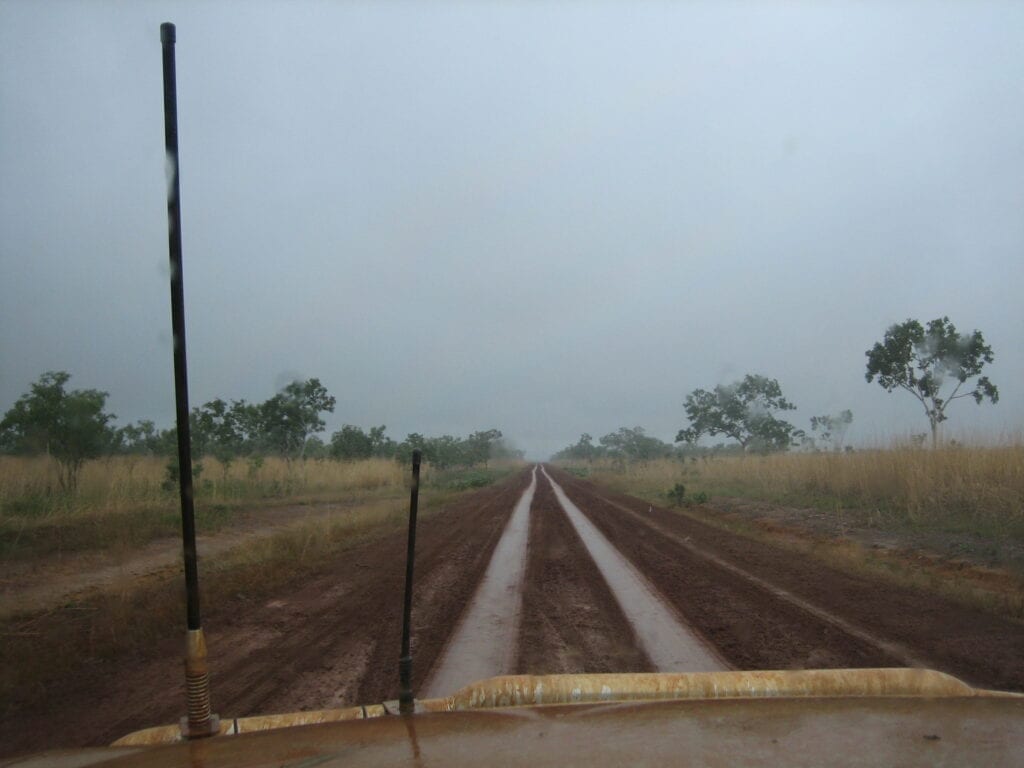
Survival supplies will keep you going until you can get out or help arrives. Such a simple plan, yet often overlooked.
How much extra water and food should you carry?
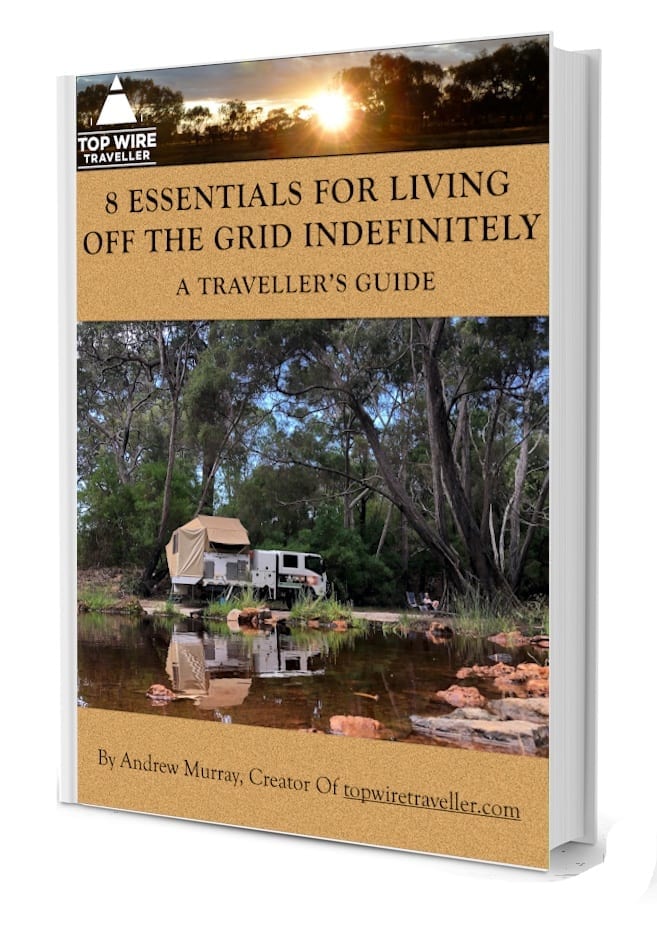
Free Download:
The 8 Essentials You Need To Live Off-Grid
…and don’t worry, eating raw fish isn’t one of them!
Water
We’ve spoken before about how quickly you can become dehydrated in hot weather. And it seems every year we read more sad stories of people dying in Australia’s outback due to dehydration.
Most likely, their vehicle breaks down in hot weather and they run out of water. Then they’re in big trouble.
This is easily avoidable.
If you’re travelling remote, take enough water to last at least 7 days longer than you’re planning to travel.
A Guide of Sorts
As a rough guide, the two of us use around 15 litres per day. That’s in total, not each. This includes everything except showering… drinking water, tea and coffee, washing up, brushing teeth and a quick wash.
If we use the shower in our Wedgetail Camper, then our two showers will use up to 10 litres in total.
So, let’s allow 20 litres per day for two people.
If you’re travelling alone, you’ll use more… you still need to wash up and so on. Again, allow 20 litres per day.
If you’re travelling in a group, allow 10 litres per day for each person.
But… and this is a big but, you’ll need to be super-conscious about conserving water. Don’t be too worried though. After a while, it becomes second nature.
In summary:
- 2 people = 20 litres per day, total.
- 1 person = 20 litres per day, total.
- More than 2 people = 10 litres per day per person.
Note: The figures above are from our experiences over many years of outback travel, and are intended as a guide.
You’ll see all sorts of figures quoted for the minimum amount of water a person needs to survive, some as low as 3 litres per day. Most don’t consider the situation where you’re broken down in 45+°C heat though.
And they don’t include the likes of washing up either.
So yes, you could survive on much less. But if you’re broken down and waiting for help, then you’ll still want to wash up, have a quick wash, brushing your teeth and so on. That’s why our figures are much higher.
A “Typical” Trip
Now, let’s have a look at one of our typical trips. This will give you an idea of what you need to carry.
We carry 90 litres in the Wedgetail Camper plus 160 litres in poly water tanks under the truck’s tray, for a total of 250 litres.
250 litres at 20 litres per day for the two of us is 12 days. Allow 7 days of spare water. So we can travel completely remote for 5 days… in other words, somewhere with no drinkable water.
Now 5 days mightn’t sound like much.
However, if you’re on the move you’ll cover a lot of ground in 5 days. Chances are you’ll go through a settlement where you can top up. And chances are, you’ll cross a creek or river where you can top up.
Be Careful Where You Fill Up…
Many communities have a tap where you can fill your tanks. Make sure you taste-test it first though. Some bore water tastes horrible and the taste will stay in your tank for months.
Years ago, we carelessly filled our camper trailer’s water tank in outback South Australia without taste-testing it first. The disgusting taste of bore water stayed in the tank for many months after.
Lesson learned… almost.
A couple of years ago, we topped up in a small outback New South Wales town. This time I taste-tested the water and it was great. However, after a couple of days our tank water tasted disgusting and had a distinct plastic smell.
Why? Because the poly pipe before the tap wasn’t rated for drinking water.
…And What You Fill Up With
It turns out that manufacturers use Toluene in poly pipes and hoses. Non-food grade poly pipes and water hoses contain traces of Toluene, which ends up in your water tanks.
This is what gives your water that horrible taste and smell. Toluene is a toxic solvent, by the way.
Not only this, our food grade water hose was now coated internally with Toluene. It ended up in the bin.
How to avoid this? Always check the poly pipe before the tap. If it has a blue stripe, then it’s okay. If not, don’t use it!
A blue stripe on a poly pipe means it’s suitable to use for drinking water. Go here to find out more about the colour-codes of poly pipe.
While we’re on the subject…
I’ve seen a thousand posts on social media where someone will innocently ask if they can use a garden hose to fill their water tanks. The conversation always goes something like this…
- Person 1: “Can I use a garden hose to fill my caravan/camper water tanks?”
- Person 2: “No. Only use a food grade hose. Don’t use a garden hose, ever. It’s not rated for drinking water”.
- Person 3: “That’s rubbish. I’ve been using my garden hose for [Insert wildly exaggerated number of years here ?] and never had a problem”.
- Then it degenerates into everyone outdoing each other on their X years of knowledge and expertise on the subject.
To be fair to the naysayers, some old garden hoses are actually okay to use. Way back in the day, hose manufacturers used rubber as the inside surface. Therefore, you wouldn’t get any nasties in your tank.
In fact, we used an old garden hose to fill the tank in our camper trailer for many years without any issues.
Now though, manufacturers use Toluene. Therefore, a new hose will most likely cause your tank to become contaminated.
And some old hoses would have had Toluene when they were new, but it’s since been flushed out with use. So they’re okay to fill your tank with.
Except…
When the inside of the hose starts to break down with age, Toluene will once again leach into the water and contaminate your tank.
Confused? I don’t blame you!
Let’s keep it simple:
- Always use a food grade water hose to fill your water tanks.
- If you fill from a tap and the hose before the tap is black poly, does it have a blue stripe? If not, don’t use it.
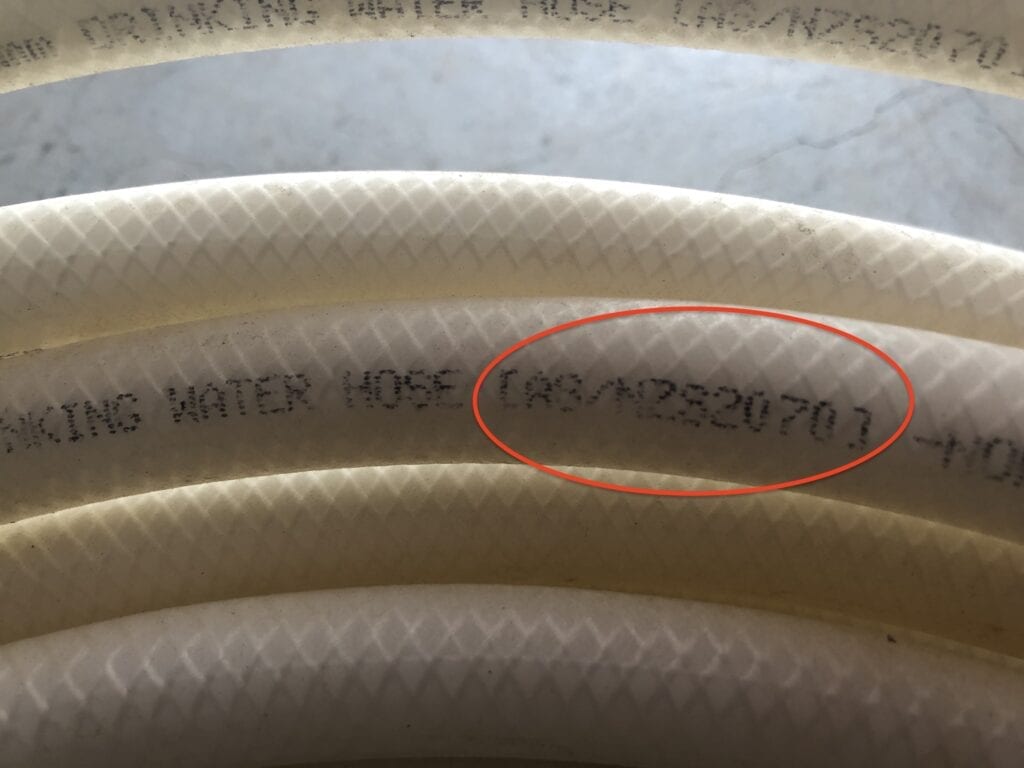
Remember those two rules and you can’t go wrong.
But what if you can’t fill up anywhere?
A Trip to the Shops
Buy it. Buy water from a general store, service station, community store and so on. Most places sell 10 or 15 litre containers of water.
It’s an expensive way to refill your tanks and the plastic waste makes us cringe. However, it’s a way better option than being stuck with contaminated water tanks… or no water at all.
Keeping it Clean
One thing you need to consider is how to keep your tank free from germs and bacteria. After a while, you’ll get nasties growing in your water tanks.
Water sitting still in semi-sealed tanks, getting heated by the sun (or high ambient temperatures) is like a slice of heaven for bacteria!
There are plenty of water purifying products available. We’ve been using Bio-Magic WaterPure for several years now. Why? Because it kills bacteria, keeps the inside of our tanks free from bacterial growth and doesn’t leave any nasty taste or smell.
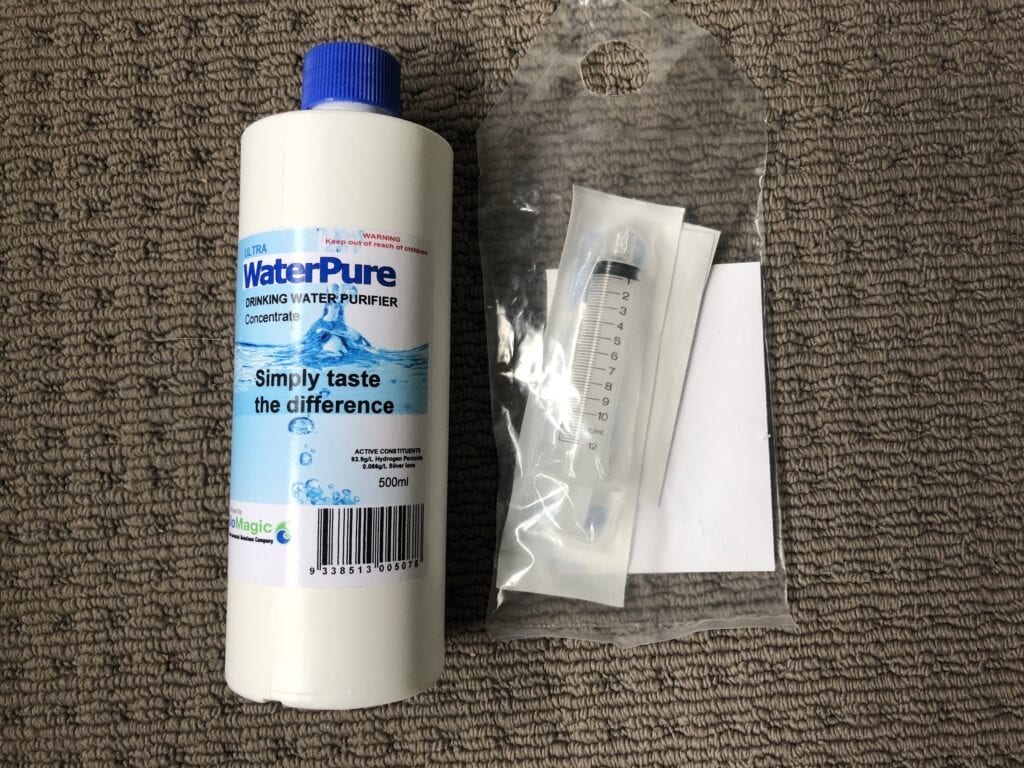
Better still, WaterPure is effective for 12 months. You can store water in a tank for a year and it will remain free of nasties.
If you refill from a creek or river, be doubly sure to purify the water. You never know what’s upstream, contaminating the water.
And if you do get a nasty taste in your tank, how do you get rid of it? We’ll explain this in more detail another time.
So now we’ve sorted your water needs to survive an emergency, let’s have a closer look at food.
Food
As we said earlier, water and food are your 2 essential survival supplies. Of these, water is by far the most important. Without water, you die.
However if you’re broken down in the middle of nowhere waiting for help, you don’t really want to go without food. That wouldn’t be much fun.
Look for food you can store for extended periods. And what’s the best survival food? Here’s a selection:
- Tinned foods like baked beans, fish, vegetables and soup,
- Pasta and pasta sauce,
- Corn Thins as a substitute for bread,
- UHT milk,
- Dried or tinned fruit,
- Nuts,
- Dehydrated camping food.
No doubt you can think of many others. (Did I mention chocolate?!)
Choose foods which don’t require lots of water to prepare or cook. Rice needs a lot more water than pasta, for example. So pasta is an obvious choice here.
Topping Up
We have two tubs packed away in our truck. They hold our emergency supplies, enough to keep us going for at least a week.
Make sure you use these supplies from time to time. This way they won’t go off or reach their use-by dates.
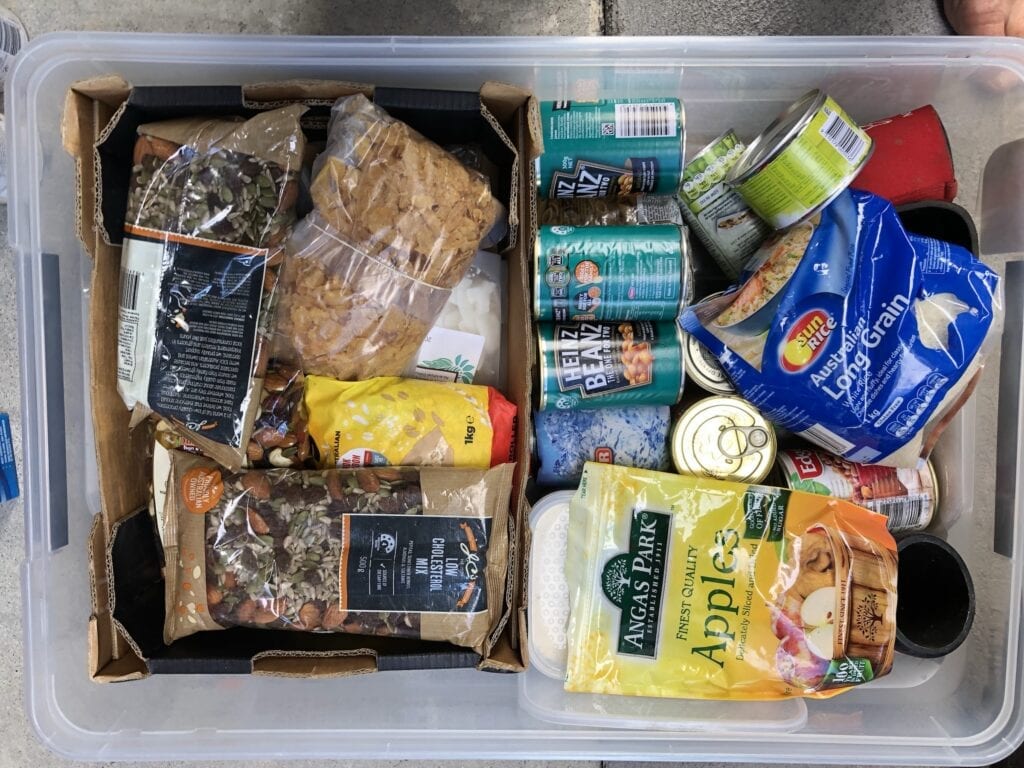
When you do, make sure to replenish what you’ve used at the first opportunity. This way, you’ll always have back-up supplies.
Storing
But where should you store all this “extra” food?
Before you go on a trip, think about what emergency food you should take. Buy it and set it out on the floor. This’ll give you an idea of how much space it will take up.
Then go looking for short but wide tubs… tubs that will sit at the bottom of everything without taking up much headroom. They could fit on the floor right up the front of your dual cab’s tray, on the floor of your camper trailer or under the bed in your caravan.
Now remember, this food doesn’t have to be easily accessible. For example, our food boxes live at the bottom of a cupboard, under our camp chairs and various other stuff we use frequently.
So, they’re out of the way and really don’t take up much room.
In Summary
Water and food are your 2 essential survival supplies. They should always be an essential part of your preparation before travelling into the outback.
Most likely, you’ll never be in a situation where you need to survive an emergency. But as I said at the beginning, no one plans to be in the middle of a life-threatening situation.
These events happen before you even realise what’s going on. Far better to be prepared than to wish you had…

Get your Traveller’s Guides
… and a whole lot more at our FREE RESOURCES Page!
Any questions or comments? Go to the Comments below or join us on Pinterest, Facebook or YouTube.
Any errors or omissions are mine alone.
For more tips and ideas on Outback Safety and Survival, go here.

